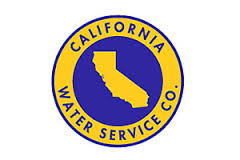Torrance Water Wars
The drought and ensuing government response have brought water related issues to the forefront in communities across California. Here in Torrance tensions are beginning to rise as more and more residents deal with the impacts of governmental decisions and begin to ask more probing questions.
Whether one might characterize it at this point as an all-out war or something more akin to a borderland skirmish, there is no doubt that consumers are getting squeezed as they continue to get hit on several fronts.
Drought Related Fines
 For those in Torrance that are Cal Water customers (about 20% of Torrance residents) drought related fines are already taking effect as Cal Water has implemented its “Water Shortage Contingency Plan.” As explained in a recent mailer, all Cal Water customers as of June 1st have been given individualized “water budgets” based on a 16% reduction in the units of water each consumer used for the same month in 2013. For every 1 Ccf (~748 gallons) that the consumer exceeds their allotted budget they will be fined a drought surcharge of at least $6.99.
For those in Torrance that are Cal Water customers (about 20% of Torrance residents) drought related fines are already taking effect as Cal Water has implemented its “Water Shortage Contingency Plan.” As explained in a recent mailer, all Cal Water customers as of June 1st have been given individualized “water budgets” based on a 16% reduction in the units of water each consumer used for the same month in 2013. For every 1 Ccf (~748 gallons) that the consumer exceeds their allotted budget they will be fined a drought surcharge of at least $6.99.
Water Use Restrictions
Torrance Municipal Water (TMW) has not yet enacted a similar allocation and fine Program to Cal Water, but TMW customers should not be surprised if Torrance follows Cal Water’s lead in the near future. Torrance has, however, responded to Governor Brown’s mandate to reduce water use by 25% by recently enacting Level 2 water restrictions. Some of the restrictions include:
- Outside watering prohibited from 8 a.m. to 6 p.m
- Limit on watering to 2 days/week; 10 minutes per area
- Requirement that leaks be fixed within 4 days
- Restrictions on filling or refilling of pools, spas, and ponds
These restrictions are of special concern to homeowners located in what is deemed the “expansive soils” district. In these areas, the soil expands and contracts based on moisture content. That movement ultimately could cause damage to homes or property. At the behest of several HOA leaders, the City agreed to include a provision in the ordinance that would allow for those impacted by expansive soils to pursue a “hardship” waiver of the water use restrictions. The Ordinance states that the waivers will be granted in accordance with “administrative procedures established by the City.” As this is a new process, however, it is unclear how the waiver process will work and how cooperative the City will be in working with affected residents.
Rate Increases
The potential fines come on top of water rate increases already enacted by the City. These rate adjustments were approved in February 2011 and slowly took effect with the final adjustment occurring at the onset of 2015. Prior to enactment of the increase, over two thousand residents submitted protests despite the notification from the City about their right to protest being sent between the Christmas and New Year’s Holiday of 2010.
With regard to the adjustment, Mayor Scotto is quoted in the minutes from the February 2011 meeting as noting “that the average residential customer will experience an increase of approximately $1.50 per month and in some cases their bills will be reduced.”
Despite that assurance from Mayor Scotto, it would appear that the rate increases have been much more substantial. The table below shows revenues earned from the water fund since 2011. Prior to the increase, projections forecasted steady revenues of about $24M a year. After the increase, revenues ballooned to an astonishing $40.7M in 2014. This revenue increase is indicative of an approximate 70% rate increase to the average consumer. The fund also showed a $5.36M surplus in 2014 up from a minimal surplus of $177K in 2008.
| Fiscal Year Ending June | 2011 | 2012 | 2013 | 2014 | 2015 |
| Water Fund Forecasted Revenues Prior to Rate Adjustment (as reflected at 15 Feb 2011 Council meeting) | $24.3M | $24.4M | $24.5M | $24.2M | $24.1M |
| Actual Water Fund Revenues | $30.1M | $34.0M | $36.1M | $40.7M | N/A |
Such numbers may leave some taxpayers wondering where all of the additional revenue is going. On that point, one resident has presented convincing evidence that some of the money was siphoned off to pay City debt versus being used for capital projects like building additional wells as was promised by the City when the rate hike went into effect.
Meter Readers
On another front, the agenda for the upcoming Council meeting includes approval to award a $750K sole-source purchase order for new Neptune brand water meters. The new fully automated radio-based (AMR) meters speed up the meter reading process as the readings can be picked up by a passing vehicle. They are also supposed to improve data accuracy. Despite the potential benefits, the matter warrants further attention due to serious concerns raised about the Neptune meters from other consumers.
 The Neptune meters have been linked to increased security risks from hackers, health risks due to the constant emittance of radio waves, fire hazards, and skyrocketing rate increases. One Torrance resident I spoke with claims that their water bill increased three-fold after their new meter was installed. After several calls to the TMW customer service office in Phoenix AZ, which she described as extremely incompetent, she was eventually told that the increase must have been due to her old meter reading incorrectly. Such interactions leave residents feeling frustrated and helpless and contribute to the rising tension and dissatisfaction many are beginning to feel each time they turn on their faucet.
The Neptune meters have been linked to increased security risks from hackers, health risks due to the constant emittance of radio waves, fire hazards, and skyrocketing rate increases. One Torrance resident I spoke with claims that their water bill increased three-fold after their new meter was installed. After several calls to the TMW customer service office in Phoenix AZ, which she described as extremely incompetent, she was eventually told that the increase must have been due to her old meter reading incorrectly. Such interactions leave residents feeling frustrated and helpless and contribute to the rising tension and dissatisfaction many are beginning to feel each time they turn on their faucet.
Other communities have successfully fought back against some of these water-related issues. Is it time for Torrance to do the same?